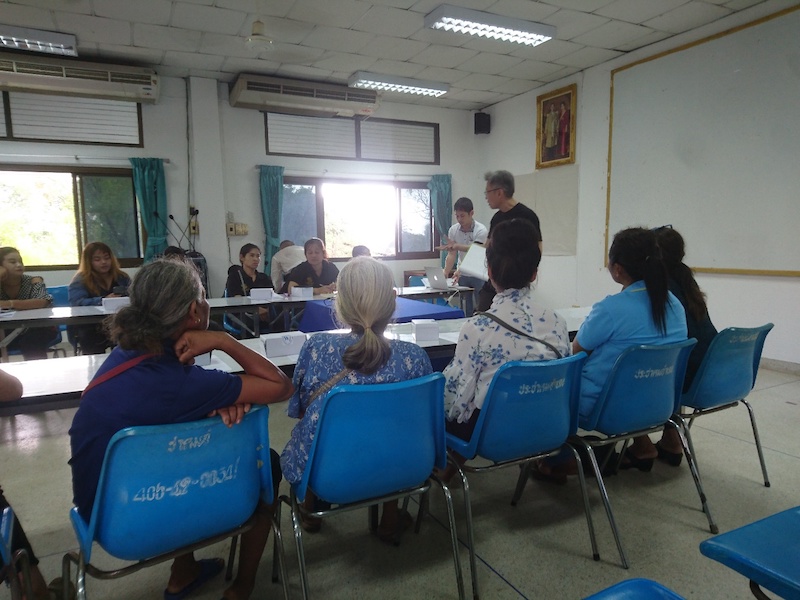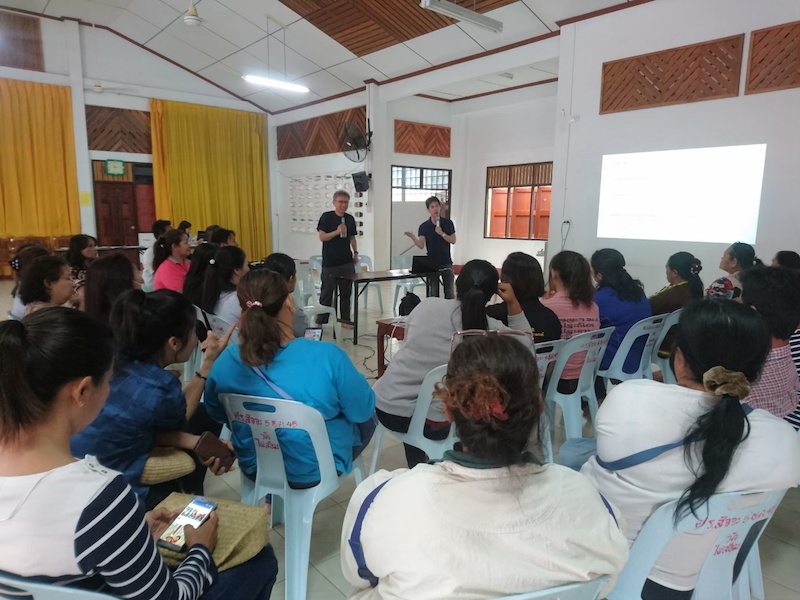This research program spans over two phases, both are financial supported by National Research Council of Thailand. The initial phase comprises three projects, together aiming to study sustainability of sufficient saving for old-age living. The second phase is designed to supplement and confirm the findings of the first phase with the same objective of examining saving sufficiency for Thai rural communities. All the projects under this research program are throughout conducted in Trat province.
Phase I:

Adequacy of Saving for living after retirement is one of the important concerns, inasmuch as Thailand has moved to become an aging society since the last decade, and the number of elderlies continues to grow. Therefore, this research program aims to study sustainability of sufficient saving for old-age living by three components. Firstly, we collect data on households in local communities in order to gain insight to the current socio-economic conditions and to assess sufficiency of each household’s saving level on the benchmark of an economic model under the life-cycle-theory framework. Secondly, we collect data and evaluate cash-flow risk and sustainability of saving groups operating in each local community. Thirdly, we conduct a randomized control trial (RCT) to investigate potential policy designs to lift up saving.
Phase I – Project 1:
A Study of the Elderly’s Optimal Savings in Rural Communities
This project focuses on the sufficiency of saving level for rural Thai households by comparing their actual saving levels with the optimal level recommended by the life-cycle economic model we employed as the theoretical benchmark. Unfortunately, we find most of the households in our sample having insufficient saving. The result is robust after controlling for age of each household’s head. However, we finds that most of the households with sufficient savings are the households whose family heads earn at least a Bachelor’s degree. This findings suggests that education could be an indicator for better understanding the importance of saving, which is a part of basic financial literacy.
Phase I – Project 2:
A Study of Elderly Social Welfare from the Network of Community-based Social Security Fund
Microfinance in Thailand has been developed from institutions that offer merely saving and credit products to ones that incorporate social welfare benefits for their members. These benefits are long-term liabilities of the microfinance suppliers and, therefore, can create solvency risks. This project develops a mathematical model to evaluate financial sustainability of rural village-based community funds. The minimum rate of returns that the funds will have to generate in order to maintain its solvency is then calculated and compared to their actual rate of returns. Our result shows that 18 out of the 40 funds in our sample will become insolvent at some point in the near future. The main reason of such insolvency is too low saving rates among fund members, rather than too high level of social welfare benefits. Therefore, policies that target to promote savings among rural households is likely to be the key policy that can improve the long-term financial sustainability of local community-based microfinance institutions in rural Thailand.
Phase I – Project 3:
A Study of Saving Mechanisms for Elderly in Rural Communities
The main objective of this project is to study impacts of financial literacy and small cash incentive on household saving behavior by conducting a randomized control trial (RCT) on rural households living in Trat province. The main finding is that the group of households receiving only financial literacy increase their saving-to-income ratio significantly more than the control group does, suggesting that financial literary provision possibly be a way to help improve household saving. On the contrary, there is no statistical evidence that the small cash incentive positively affected household saving behavior. However, the finding could be a result of time limitation which constrains the project to only observe the very short-term impact. It is possible that the incentive could help increase household saving in a longer term. In addition, time limitation makes it impossible for this project to evaluate sustainability of the financial literacy impact.
Phase II:

This research project’s main objective is to confirm the results of the previous phase regarding household saving behaviors and mechanisms for enhancing their saving. Under this project, we resurvey the households to expand a period of the previous-phase panel database, conduct sensitivity analysis of optimal saving to several parameters, re-examine the effects of financial literacy and incentive as saving-enhancement mechanisms in a longer term, as well as carry out in-depth interviews and group discussions for better insight of the results. In addition, this project adds investigation on households’ subjective well-being and its correlation with saving behaviors.

Our results reveal that optimal saving is not sensitive to the investigated parameters within the relevant ranges, confirming the previous-phase conclusion that many households in Trat rural communities save inadequately compared to their optimal levels estimated by the model. Both financial literacy and incentive provision tested in Phase 1 are confirmed to have no significant effects on improving households’ saving behavior, even in the expanded time frame. Besides, we find positive correlation between saving and valuables, which is a measure of subjective well-being. Finally, the data from the interviews and group discussions suggest that saving of households in rural communities depend on various economic conditions as well as behavioral factors, which make it challenging to design an appropriate saving-enhancement mechanism for everyone. In other words, one-size-fit-all policies will not be successful for Thai economy.
